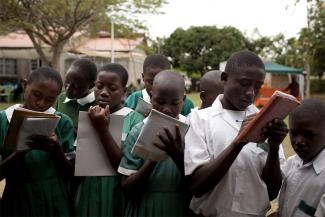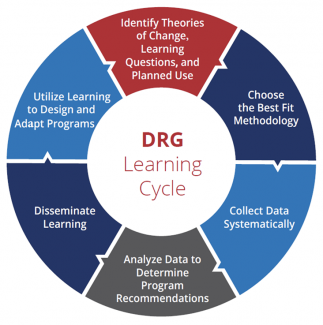Evidence and Learning
USAID aims to increase the role that evidence and learning play in effective democracy, human rights, and governance decision-making and to advance a culture of learning within the DRG sector.
USAID aims to increase the role that evidence and learning play in democracy, human rights, and governance (DRG) decision-making and to advance a culture of learning within the DRG sector. Learning is an ongoing, multi-method process of generating, curating, and utilizing knowledge and evidence to improve the effectiveness of USAID DRG assistance. Learning products are produced by USAID/Washington and field-based staff working in collaboration with practitioners and academic experts to generate actionable findings and recommendations that meet the learning needs of USAID’s global DRG cadre of field officers.
USAID DRG programs represent a significant global investment whose effectiveness is improved via rigorous monitoring, evaluation, and learning. Given the wide array of technical approaches in the USAID DRG portfolio and the varied and dynamic country contexts where USAID works, the need for learning and adapting is continuous to achieve DRG outcomes, and the following principles guide our work:
- Evidence should be used.
- Learning should be generated using a variety of research methods and "best-fit" approaches.
- For all methods, there should be excellence in their application.
- DRG learning is most effective when it draws on diverse academic fields, cultural perspectives, and national/regional experiences.
WHAT WE DO
The DRG Learning Agenda is a dynamic collection of research questions that serve to guide the DRG Center’s and USAID Missions’ analytical efforts related to DRG, while the annual DRG Learning Forum is an event to share the most updated evidence, and to reflect on how best to apply learning to DRG programming.
The learning process is advanced through the following six-step DRG Learning Cycle, an adaptation of the scientific method for use with and by aid practitioners to guide learning initiatives in the sector.
- Identify Theories of Change and Learning Questions. Identifying meaningful theories of change, learning questions, learning agendas, and how learning will be used are critical first steps to clarify and prioritize research and learning investments.
- Choose the Best Fit Methodology. The best fit and most rigorous learning approach/methodology is selected in accordance with the learning question or theory of change that were identified.
- Collect Data Systematically. Data is collected systematically, employing both quantitative and qualitative approaches as needed to appropriately address the learning question.
- Analyze Data to Determine Program Recommendations. Once data is analyzed, reflection and debate between and among researchers and practitioners is facilitated to determine the implications and concrete recommendations for USAID programs.
- Disseminate Learning. Evidence is disseminated to the USAID DRG cadre and other stakeholders via a variety of platforms, including reports, briefs, infographics, newsletters, videos, presentations, and trainings with new approaches being developed regularly.
- Utilize Learning to Adapt Programs. Relevant data, evidence, and learning are identified and curated so that they can be effectively incorporated into USAID DRG strategies and programs for improved effectiveness.



